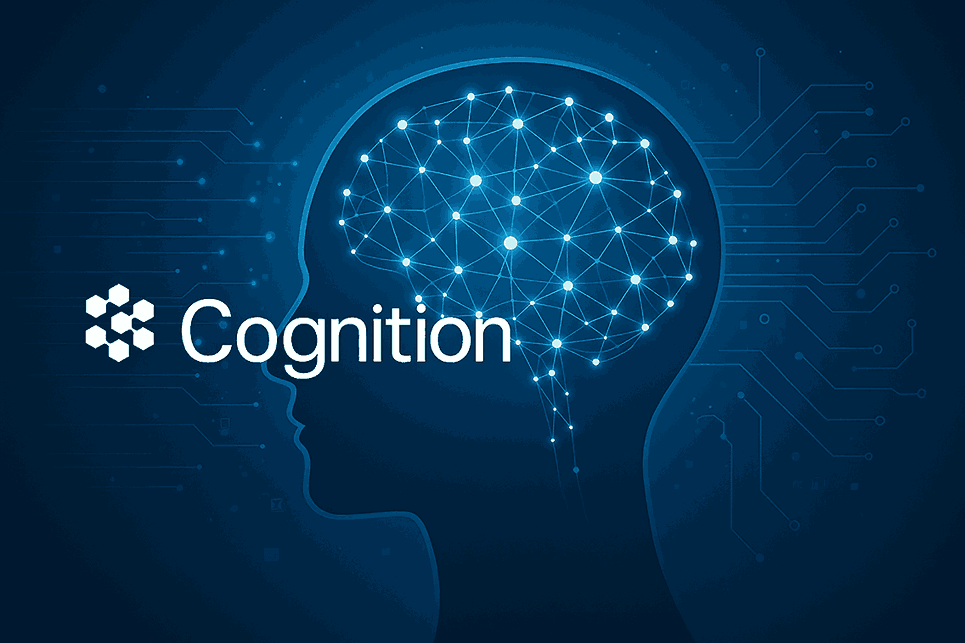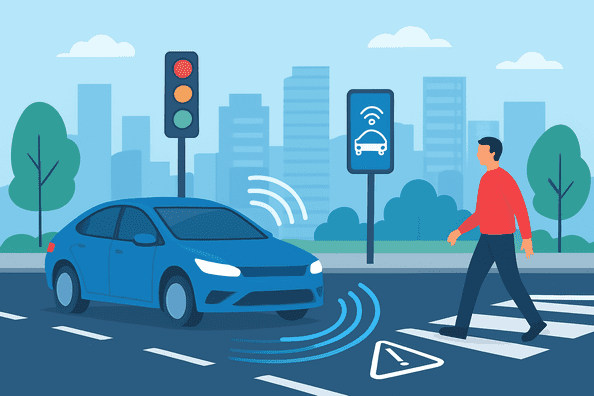Cognition AI has quickly become a household name in enterprise technology circles, commanding a valuation north of $10 billion and redefining what’s possible in smart software. By blending cutting-edge machine learning, natural language understanding, and deep domain expertise, this trailblazing company is powering a wave of applications that adapt, learn, and collaborate with humans like never before. From revolutionizing customer support workflows to enabling proactive risk management in finance, Cognition AI’s platform illuminates the path toward genuinely intelligent systems. This article dives into the origins of Cognition AI, illustrates its real-world impact, examines key innovations, weighs challenges and criticisms, and offers a forward-looking perspective on how it might continue to transform the smart software landscape.
The Rise of Cognition AI: From Vision to Unicorn
When Cognition AI launched in 2020, its founders—veteran researchers from leading AI labs—recognized a gap between academic breakthroughs and enterprise needs. Traditional AI tools excelled in narrow tasks like image classification or speech-to-text, but lacked the agility to integrate seamlessly into evolving business processes. Cognition AI’s vision: build a unified platform that combined modular machine-learning services (vision, language, anomaly detection) with an intuitive orchestration layer, enabling non-technical teams to craft smart applications without writing complex code.
Early pilot programs at midsize e-commerce retailers validated the approach. By weaving together conversational interfaces, sentiment analysis, and supply-chain anomaly detection, Cognition AI helped clients reduce customer-service response times by 40 percent and inventory shrink by 25 percent within six months. Such striking results fueled venture-capital enthusiasm, propelling the startup’s valuation to unicorn status in late 2021 and ultimately to the coveted $10 billion mark by mid-2024.
Building Blocks: The Core Technologies Behind Cognition AI
At the heart of Cognition AI’s success are three interlocking technology pillars:
Adaptive Neural Architectures
Rather than deploying one-size-fits-all pretrained models, Cognition AI pioneered adaptive architectures that dynamically reconfigure based on data characteristics. For example, a financial-fraud detection pipeline can automatically shift from supervised learning to unsupervised anomaly detection when transaction patterns diverge from historical norms. This flexibility yields higher accuracy and robust resilience against adversarial behavior.
Conversational Knowledge Graphs
To capture domain context, Cognition AI engineers merged conversational AI with large-scale knowledge graphs. When a customer chats about billing discrepancies, for instance, the system consults a real-time graph of account hierarchies, service plans, and past tickets—delivering precise, personalized resolutions. The tight coupling of graph traversal and language understanding distinguishes Cognition AI’s assistants from generic chatbots, reducing escalations by up to 30 percent in customer-experience trials.
Continuous Learning Orchestration
Production AI often suffers from model drift as real-world data evolves. Cognition AI’s orchestration layer continuously monitors performance metrics and triggers retraining, A/B testing, or human-in-the-loop reviews whenever quality dips. Clients report that this closed-loop approach slashes maintenance overhead by half compared to manual retraining workflows.
Real-World Impact: Stories from the Front Lines
Transforming Healthcare Diagnostics
A leading hospital network in California integrated Cognition AI’s image-analysis suite to augment radiologists’ workflows. By cross-referencing patient histories, lab results, and imaging scans, the platform flagged potential anomalies with confidence scores and contextual explanations. Within eight months, diagnostic throughput increased by 20 percent, and false negatives for critical findings fell by 15 percent, freeing clinicians to focus on complex cases.
Scaling Customer Support at a Global Telecom
A multinational telecom operator struggled with surges in customer-support volume after rolling out a new 5G plan. By deploying Cognition AI’s conversational agent across chat, email, and voice channels, the operator automated routine inquiries—billing, plan upgrades, and network-status checks—while seamlessly handing off tricky issues to human agents. Customer satisfaction scores rose by 12 points, and average handle time dropped by nearly 2 minutes per call.
Proactive Risk Management in Financial Services
An investment-bank trading desk faced escalating regulatory scrutiny after several high-profile compliance incidents. Cognition AI’s risk-monitoring module analyzed unstructured communication—instant messages, emails, and voice transcripts—detecting early-warning signals of unacceptable behavior or market leaks. By combining sentiment shifts with network-analysis alerts, the bank identified insider-trading risks days before they materialized, averting potential fines and reputational damage.
Balancing Innovation and Responsibility
While Cognition AI’s achievements are impressive, its rapid growth invites scrutiny on several fronts:
Data Privacy and Governance
Handling sensitive customer or patient data demands airtight privacy safeguards. Cognition AI offers end-to-end encryption and granular access controls, yet some clients worry about third-party dependencies. To address this, the startup recently launched an on-premises deployment option and enhanced its audit-trail capabilities.
Algorithmic Bias and Fairness
AI systems trained on historical data risk perpetuating existing biases. Cognition AI has instituted bias-detection modules that flag disparate impact across demographic groups. Moreover, human-review panels work alongside automated checks to ensure fairness in high-stakes domains like lending or hiring.
Talent and Adoption Curve
Adopting advanced AI tools often exceeds the comfort zone of traditional IT teams. Cognition AI combats this through a robust partner network—consultancies, system integrators, and domain experts—who guide clients through proof-of-concept to full-scale rollout. Nevertheless, a learning curve remains, and smaller organizations sometimes find the onboarding cost prohibitive.
The Personal Touch: Lessons from Early Adopters
Having spoken with dozens of Cognition AI customers, a few themes stand out:
Cross-Functional Collaboration
Success hinges on assembling teams that blend data scientists, domain specialists, and frontline users. Projects that lock in all stakeholders from day one see faster ROI and better feature adoption.
Start Small, Scale Fast
Piloting with a single high-impact use case—such as automated invoice processing or chat-based help desks—generates quick wins. These proofs then pave the way for scaling to multiple departments without overwhelming governance or infrastructure.
Continuous Feedback Loops
Ensuring that business users can easily flag model errors or suggest new data sources keeps the platform aligned with evolving needs. Cognition AI’s built-in feedback portal streamlines this cycle, fostering a culture of shared ownership.
Looking Ahead: The Next Frontier for Cognition AI
As Cognition AI eyes further expansion, several trends will shape its trajectory:
Edge-Native Intelligence
Deploying smart models directly on devices—IoT sensors, industrial machines, even smartphones—enables ultra-low-latency decisioning. Cognition AI is already testing lightweight variants of its inference engine that run offline, opening doors for remote-site monitoring in oil and gas, manufacturing, and agriculture.
Multimodal Fusion
The future of AI lies in synthesizing text, audio, vision, and sensor data. Cognition AI’s upcoming “Fusion Studio” promises drag-and-drop pipelines that blend multimodal inputs—imagine product-inspection robots that correlate visual defects with acoustic signatures, or marketing analytics that tie speech-survey responses to facial expressions.
Democratized AI Marketplaces
Recognizing that no enterprise has endless data-science bandwidth, Cognition AI plans to launch a curated model marketplace. Third-party developers can contribute vetted modules—industry-specific sentiment analyzers, fraud-scoring engines, medical-image preprocessors—accelerating innovation and broadening the ecosystem.
Conclusion
Cognition AI’s ascent from scrappy startup to $10 billion powerhouse underscores a simple truth: truly smart software must blend adaptable algorithms, rich contextual understanding, and seamless human partnership. By pioneering adaptive neural architectures, conversational knowledge graphs, and continuous-learning orchestration, Cognition AI delivers tangible business impact across healthcare, finance, telecommunications, and beyond. Its commitment to privacy, fairness, and customer success points the way toward responsible AI adoption. As edge computing, multimodal fusion, and marketplace ecosystems emerge, Cognition AI stands poised to shape the next era of intelligent applications—bringing us ever closer to the vision of software that learns, reasons, and collaborates just like we do.



